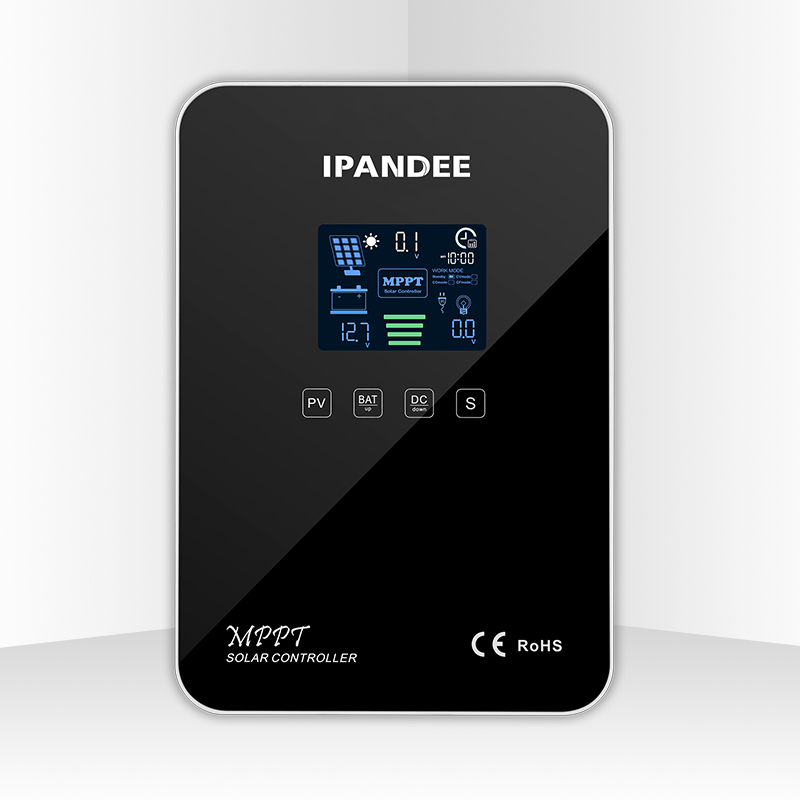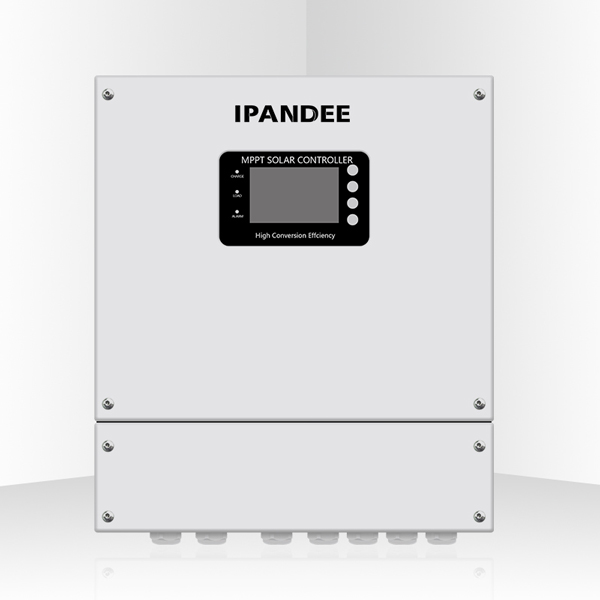In off-grid solar systems, the photovoltaic (PV) controller is mainly used to transform and store the electricity generated by the PV components into batteries. It is also used to protect the batteries from overcharging and over-discharging, which can prolong the battery life.Therefore, the solar charge and discharge controller is essential.
Currently, there are two main technical routes for controllers: Pulse Width Modulation (PWM) and Maximum Power Point Tracking (MPPT). Each method has its advantages and disadvantages and can be selected based on different scenarios.
Characteristics of PWM vs MPPT solar controller
Characteristics of PWM controller
The main circuit of the controller usually adopts a common positive pole design, consisting of one set of power switching tubes and one set of PV anti-reverse tubes. This electrical structure and control are simple. PWM-Pulse Width Modulation, generally in a direct charging state, which generates less heat. During constant voltage and constant current stage, it is controlled by chopping waves to limit the charging voltage and current. This design requires a small voltage difference between the PV panel voltage and battery voltage.
PWM uses a high-performance microprocessor to output to control the analog circuit, using strong charging, balanced charging, and floating charging for three stages to charge the battery.
Characteristics of MPPT controller
The main circuit of the MPPT controller usually adopts a negative pole design, consisting of an input capacitor, one set of PV anti-reverse tubes, one set of BUCK circuits (or BOOST circuits), and an output capacitor. It always works in a chopping state and generally works within a large voltage difference range between the PV and battery (usually 2~8).
Compared with PWM controllers, MPPT controller has more powerful functionalities, as they add inductors and power diodes. The MPPT solar controller refers to the solar controller with Maximum Power Point Tracking function, which can detect the voltage and current of the solar panel in real-time and continuously track the maximum power (P=U*I), ensuring that the system is always charging the battery at maximum power. The MPPT tracking efficiency is 99%, and the entire system's power generation efficiency is as high as 97%.
MPPT controller uses high-performance microprocessors with better protective and charging capabilities. They use strong charging, balanced charging, and floating charging for three stages to charge the battery.
How to choose between MPPT and PWM solar controller
PWM and MPPT controller have their unique advantages and disadvantages, and the choice of scheme depends on the design characteristics, costs, and external environment of the solar PV array. When choosing, the following factors should be considered:
MPPT controller is more expensive than PWM controller. However, MPPT controller has higher charging efficiency, especially in cold weather conditions. MPPT controller also support more PV panels to be connected in series with wires (high voltage difference), which is a significant advantage. In this case, the cross-sectional area of the connecting cable can be greatly reduced, making the overall system cost correspondingly lower.
Compared with MPPT controller, PWM solar controller cannot charge the maximum power produced by the PV array. Its overall efficiency is usually between 65-85%. On the other hand, MPPT controller ensure that the solar array is always in the best operating status. In some cases, such as in cold weather, the charging efficiency provided by MPPT is 30% higher than that of PWM control (high charging efficiency).
The PWM method is mature, with a simple and reliable circuit and a lower cost. However, its component utilization is lower and is suitable for small systems. The temperature range of the solar charging unit is between 45-75℃. The MPPT controller is a better choice for large systems, and its higher efficiency means more significant economic benefits. In addition, the MPPT controller supports users to obtain the maximum power from the PV array. When extra power is needed and the site cannot expand the size of the PV array, the MPPT controller has a significant advantage in this situation.
 English
English  한국어
한국어  français
français  Deutsch
Deutsch  Español
Español  italiano
italiano  русский
русский  português
português  العربية
العربية  tiếng việt
tiếng việt  ไทย
ไทย  Polska
Polska  中文
中文







